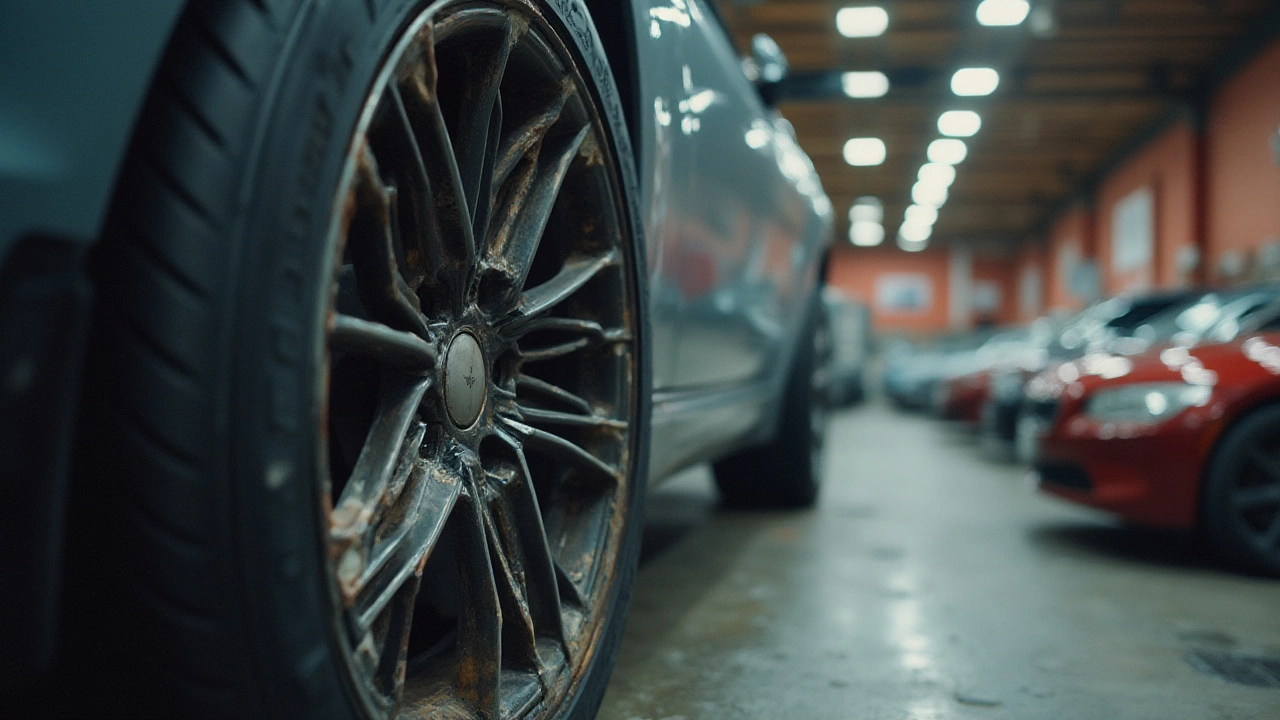Alloy Rims Disadvantages: What Car Owners Need to Know
- Gareth Westbrook
- 22 07 2025 Wheels and Tires
Alloy rims aren't all they’re cracked up to be. Get the real scoop on common problems, hidden costs, and tips for keeping your wheels in top form.
If you’ve ever noticed a bent rim, a crack running across the face of a wheel, or rust spreading on your alloy wheels, you’re not alone. Alloy wheels look great, but they can develop issues that affect safety, performance, and looks. Below you’ll get the straight‑forward facts on why problems show up and what you can actually do about them.
Alloy is a mix of metals, usually aluminium with a little silicon or magnesium. It’s lightweight, which helps fuel economy, but it also means the metal is softer than steel. When you hit a pothole, curb, or even a deep splash of water, the wheel can flex more than a steel rim. Repeated flexing creates tiny stress points that turn into cracks over time.
Corrosion is another common culprit. Even though aluminium forms a protective oxide layer, that layer can be damaged by road salt, sand, or harsh cleaning chemicals. Once the film is breached, water gets in and the metal starts to rust. The rust isn’t just an eyesore – it weakens the rim and can spread to the spokes.
Finally, poor fitment is a hidden cause. If the wheel’s bolt pattern, offset, or size doesn’t match the car, the wheel sits at an odd angle. That puts uneven pressure on the rim when you turn, brake or accelerate. The result is a bent rim or cracked edge that shows up after a few weeks of driving.
First, inspect your wheels regularly. Look for any visible cracks, dents, or rust spots. A quick visual check every month will catch problems before they get dangerous.
If you find a small crack (under a centimetre), many garages can weld it up or use a specialised epoxy. The repair is cheap and restores strength, but make sure the shop follows the manufacturer’s guidelines – an improper fix can cause the crack to spread.
Bent wheels need professional straightening. It’s not a DIY job because the correct tools apply precise pressure to bring the rim back to true. Driving on a bent wheel can damage suspension parts and cause uneven tyre wear.
For corrosion, clean the wheel with a pH‑balanced alloy cleaner. Avoid acidic or abrasive cleaners, as they strip the protective coating. After cleaning, apply a clear coat or a dedicated wheel sealant. This creates a barrier that stops salt and water from getting in.
Fitment matters. When you buy a new set, double‑check the bolt pattern, offset and load rating. If you’re unsure, ask the installer to measure the torque and confirm the wheel sits flush against the hub. A correct fit eliminates unnecessary stress.
Lastly, drive smart. Slow down over potholes, avoid sharp turns at high speed, and steer clear of road salt piles when possible. A cautious driving style reduces the shock that causes cracks and bends.
When you keep an eye on your alloy wheels and follow these simple steps, you’ll enjoy their stylish look for years without costly repairs. Anything else? Just remember: inspect, clean, protect, and fit right – that’s the recipe for trouble‑free wheels.

Alloy rims aren't all they’re cracked up to be. Get the real scoop on common problems, hidden costs, and tips for keeping your wheels in top form.